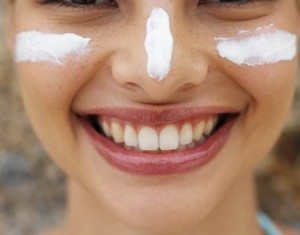As someone who tans in a tanning bed every once in a while, I’m not exactly proud of the fact that I do it. In addition to the fact that my mom lectures me on the dangers every time she sees me go, I’m very well aware that I’m putting myself at risk for basal cell carcinoma, squamous cell carcinoma, and melanoma, the deadliest type of skin cancer. I wanted to find out if there are any known benefits of indoor tanning and to my surprise, there are quite a lot.
According to this article, indoor tanning is actually extremely beneficial to those who tan for a small amount of time (ten minutes) each day. It states that the tanning booths UV rays help your body produce Vitamin D, which has attributed to preventing diseases such as colon cancer, depression, high blood pressure, breast cancer, fibromyalgia, prostate cancer, Seasonal Affective Disorder (SAD), PMS, arthritis, psoriasis, diabetes and osteoporosis (Health Guidance). This was extremely surprising to me because I would have never thought that there was a correlation between Vitamin D and prevention of a disease like arthritis; the two seem incredibly unrelated. The article also states that indoor tanning reduces eczema flare ups and can color darken stretch marks to better match the color of your skin.
Although this all sounds great, I’m not buying it.
I decided to look up Vitamin D and how it prevents all of these serious diseases. Every single article that came up said something along the lines of “Vitamin D may lower the risk…”, and “Researchers have found that there may be a link between Vitamin D and…”. Even the American Diabetes Association states that most of the research on prevention of diabetes with Vitamin D is based on observational, epidemiological studies, which are important for generating hypotheses but do not prove causality (Diabetes Spectrum).
We know that indoor tanning causes cancer. We know that it is extremely dangerous to our health. We know that it can give us third degree burns. It’s a federal law that all tanning salons in the United States list all the warnings in every single room with a tanning bed because these risks are that serious. The research that the Vitamin D we get from indoor tanning ‘may’ prevent this, and it’s linked to ‘possibly’ reduce that is not enough to publish and reassure the public that baking in these machines is safe for us.
The information that I found on the Skin Cancer Foundation website is enough to scare anyone into no longer indoor tanning. The fact that more people develop skin cancer from using tanning beds than lung cancer because of smoking is extremely concerning (Skin Cancer Foundation). The general public should be extremely wary of the information that they read and where it’s coming from. Much of this “research”, which isn’t actually even research since I failed to find even one positive connection between indoor tanning and our health on a science database, could be coming from someone who indoor tans themselves and is trying to justify it, or they could be receiving funding from the indoor tanning industry to convince us to believe this information. Just like we learned in class about the paper towel industry funding the research that claimed that air hand dryers were detrimental to our health due to the bacteria that was being blown onto our hands, this could be happening with articles that list the benefits of indoor tanning that seem too good to be true.
Even though aesthetics are extremely important to so many of us, it’s not worth our health in the long run to look good now. No amount of stretch marks or inconvenient eczema is worth the high risk of cancer that comes along with unnecessary indoor tanning. After doing this research, I’m definitely going to cancel my tanning membership for good.
Sources –
- Source 1 – Indoor tanning is beneficial
- Source 2 – American Diabetes Association
- Source 3 – Skin Cancer Foundation
Picture Sources –



